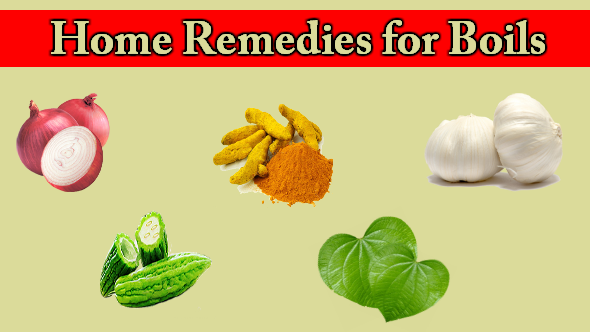

They should be wrapped in a thin cloth and changed every few hours. All the following are variations of the warm-washcloth compress. Cures From The Kitchenįolklore has it that home remedies for boils are as close as your vegetable bin.
Home remedies for boils skin#
If you’re prone to boils, you may be able to reduce their frequency by cleaning your skin with an antiseptic cleanser like Betadine to keep the staph population down.
Home remedies for boils how to#
MORE: Why You Can't Stop Picking At Your Skin-And How To Stop It Set The Stage For Prevention Then apply the paste to the boil, which should draw out the pain, heat, and inflammation, Dean says. Using a blender, mix purified or boiled water with just enough clay to make a thick paste. You can purchase the powdered clay in a health food store or online. “Bentonite clay is an effective treatment for boils,” says Carolyn Dean, MD, ND. “Tea tree oil is a natural antiseptic,” says Georgianna Donadio, PhD. MORE: 4 Other Healing Uses For Honey Tackle It With Tea Tree OilĪfter a boil has opened and drained, put a little tea tree oil on a cotton ball and dab it onto the area a few times a day until it is no longer painful. The honey works on an osmotic basis, sucking liquid right out of the bacteria and killing them,” he says. “It makes an excellent antibacterial mix. Once the boil pops, apply a mixture of honey and iodine, which should help treat the infection, says Jacob Teitelbaum, MD. After treating a boil, wash your hands well and especially before preparing food because staph bacteria can cause food poisoning. Take showers instead of baths to reduce the rare chance of spreading the infection to other parts of the body. When a boil is draining, keep the skin around it clean.

MORE: Why You Should Never Pop An Ear Pimple Keep It Localized Wipe it with hydrogen peroxide or apply an over-the-counter antibiotic ointment such as Polysporin or Neosporin as insurance. MORE: 10 Worst Foods For Your Skin Clean ItĪudrey Kunin, MD, recommends keeping a boil clean to guard against spreading the infection. “A bandage is mainly to keep the drainage off your clothes,” he adds. Covering the open boil is one way to do that, but it’s not critical. All of the pus must drain from the tissues, and it is important that the area kept clean.

It’s important to continue the warm compresses for 3 days after the boil breaks, Basler says. It’s not uncommon for a boil to take 5 to 7 days to break on its own, he says. Change the cloth a few times during each session to keep it warm. At the first sign of a boil, place a warm, moist washcloth over it for 20 to 30 minutes three or four times a day. The heat will cause the boil to form a head, drain, and heal a lot faster. “Applying a warm compress is the very best thing you can do for a boil,” says Rodney Basler, MD. But for the most part, you can treat them safely at home. Sometimes the body reabsorbs the boil other times the boil swells and erupts before it drains and subsides. A pus-filled abscess begins to grow beneath the skin surface, rising up red and painful. The body’s immune system sends in white blood cells, which collect as pus, to fight the bacteria. Boils generally develop when Staphylococcus bacteria invade the body through a break in the skin, a blocked sweat gland, or an ingrown hair. A boil, also called an abscess, is an infection deep inside the skin that produces redness, pain, swelling, and pus.


 0 kommentar(er)
0 kommentar(er)
